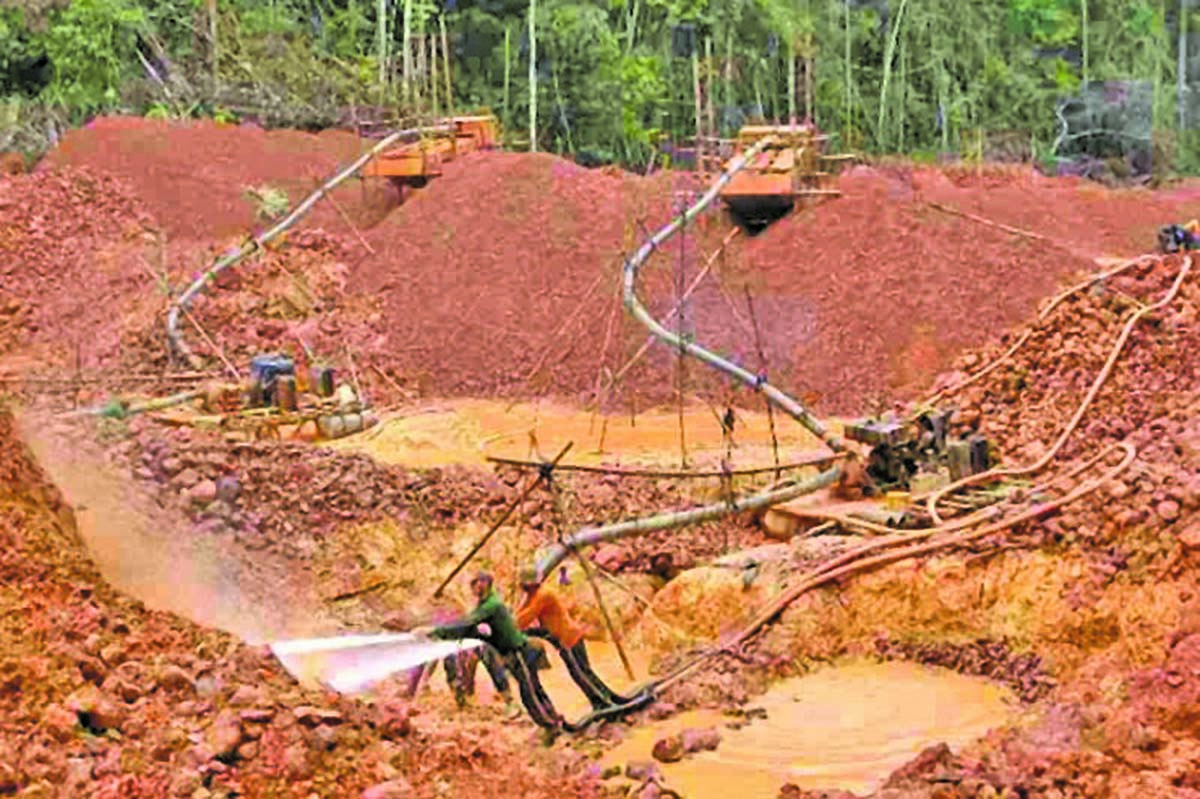National mineral policy
– warns against mixing oil & gas local content with gold sector
The Government’s recently released draft National Mineral Sector Policy has recommended, among other things, the creation of a local content policy tailored specifically for the gold mining sector.
 According to the policy, this approach to local content should target large-scale miners. The need to ensure local content development at the community and regional levels was also emphasized.
According to the policy, this approach to local content should target large-scale miners. The need to ensure local content development at the community and regional levels was also emphasized.
It noted that the local content policy being drafted for the oil and gas sector is not necessarily applicable to other sectors. As such, the document notes the need for a separate local content policy that takes into account mining’s connection to communities.
According to the document, these contributions should be made in ways that include the environment, economy, culture and social issues and community development in the relevant areas.
The policy also listed some benefits to the communities of mining companies giving back more, including the stability it would bring to mining regions and communities “in times of reduced mining activity or mine closure.”
According to the policy, such an approach would also “strengthen the social licence for mining in regions and communities by enabling residents to see direct links between mining and their socio-economic progress, promote social cohesion, promote the mitigation or elimination of mining-related hazards and environmental damage from past mining, such as unstable grounds and slopes, excessive erosion, mined out pits, and mercury-contaminated areas.”
The draft policy document also acknowledged that while miners do give back to the community even without a formal local content policy, more can be done once supported by development agreements.
The document notes that this local content policy must be drafted through a multi-stakeholder process. One method recommended by the policy is revenue sharing through a multi-year extra-budgetary fund for communities.
Assistance
The policy also proposes a miner’s assistance scheme. This is based on the premise that many small-scale miners lack capital for improving their operations. According to the policy, assistance could take several forms including loans and equity-based financing.
The document gives some details about this proposal, noting that priority treatment can be given to miners without such equipment, to syndicates and other partnership arrangements, as well as the granting of waivers on all duties for targeted equipment.
Providing justification for this proposal, the document recommends miners lodge partial collateral, set at a percentage of the cost price of the equipment. This collateral, according to the policy, could be land, a cash bond or a freeze on the account of a guarantor, with little to no interest on repayments and a grace period before first payment of instalment.
It also proposes “a repayment scheme that awards points to the miner for gold declarations over a certain amount. The higher the declaration, the more the Government reduces the debt (and a) reward for quick payback of debt in the form of a full transfer of ownership of the equipment to the miner if a large amount of the debt, for example, 80 per cent, is repaid within a short period”.
The document also recommends the auctioning of all reclaimed equipment by Government, with a pre-set floor price to create a level playing field. Besides the miners’ assistance scheme, a proposal is also made for upgrade training and extension services to miners.
The document proposes “building on the experience, outputs (in particular the codes of practice) and recommendations of the GENCAPD field studies, the Responsible Mining initiative of Conservation International, and other such projects.”
It also recommends expanding waivers for green mining technologies and expanding the Guyana Mining School. To make more land available, the document also recommends ways of discouraging persons sitting idly on mining blocks, instead of actually mining.
Last year, consultations on this very policy were held. These consultations were hosted by a tribunal from a policy committee. Representatives from the Environmental Protection Agency, Guyana Lands and Surveys and the Guyana Women Miners Association were present.
 According to the policy, this approach to local content should target large-scale miners. The need to ensure local content development at the community and regional levels was also emphasized.
According to the policy, this approach to local content should target large-scale miners. The need to ensure local content development at the community and regional levels was also emphasized.